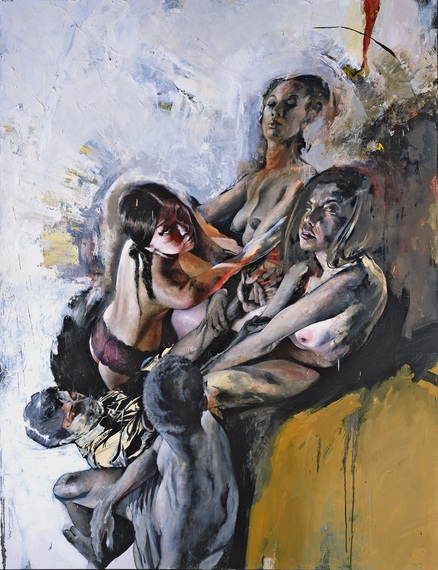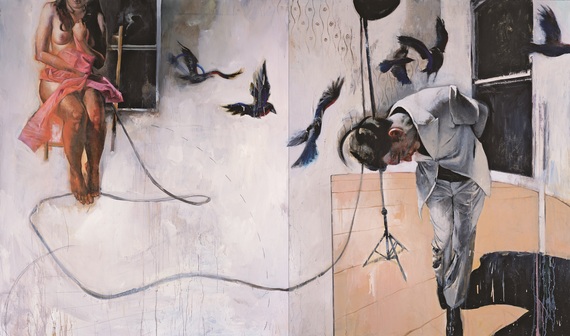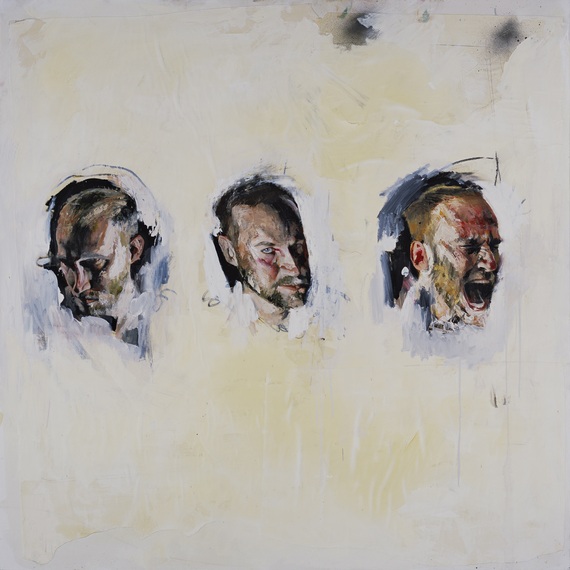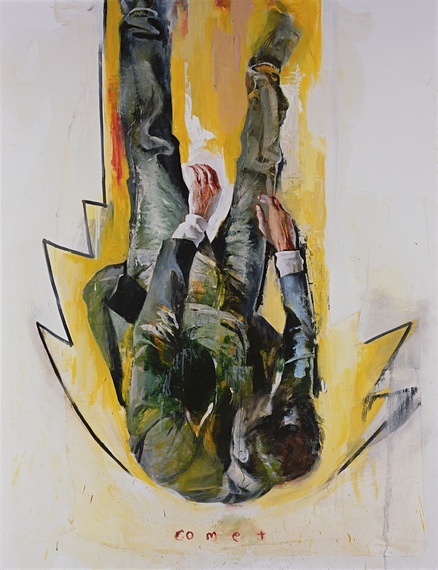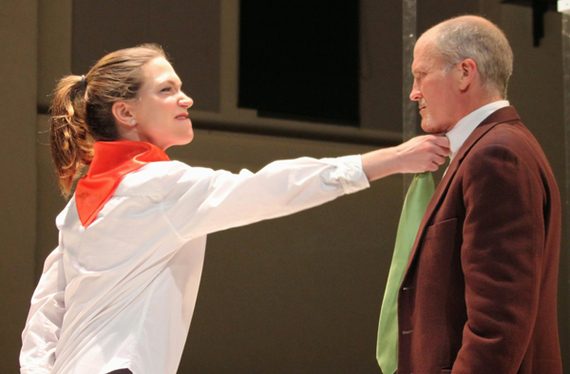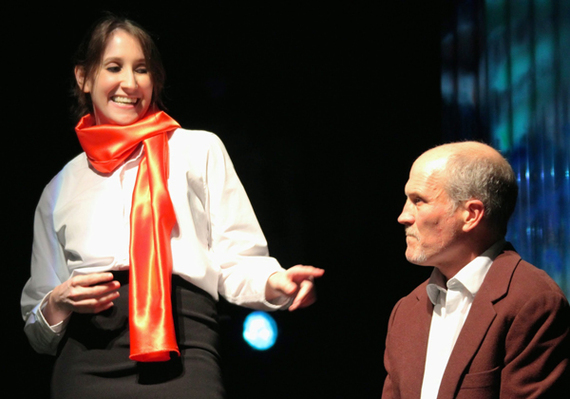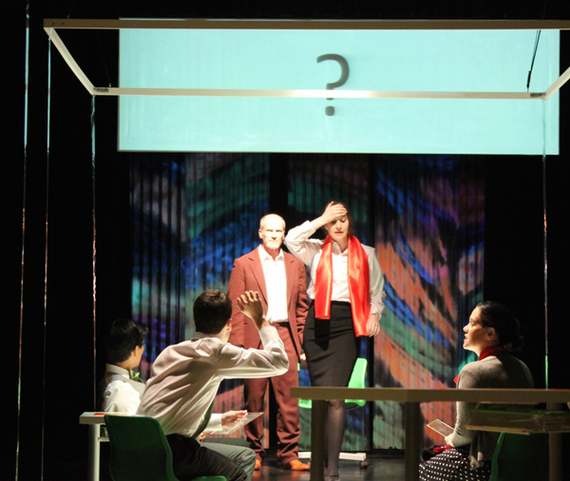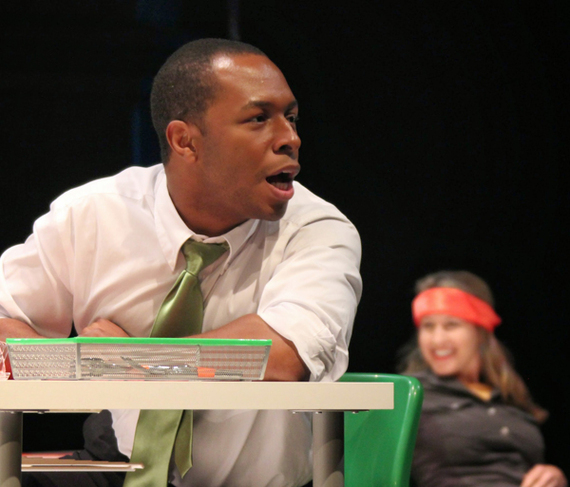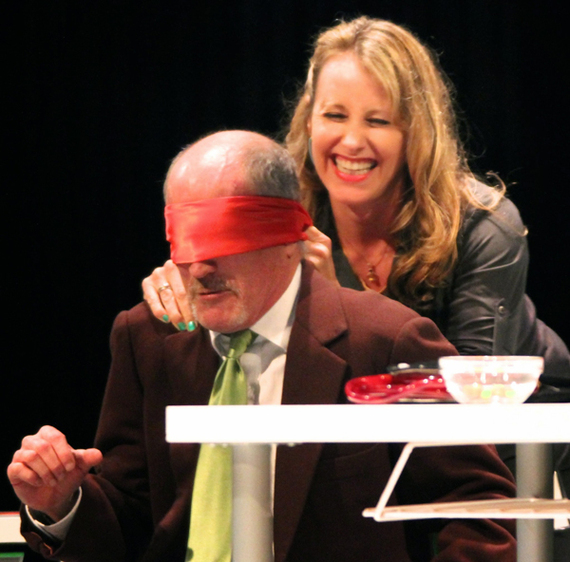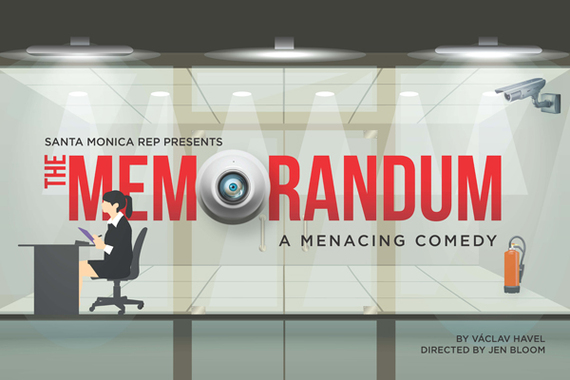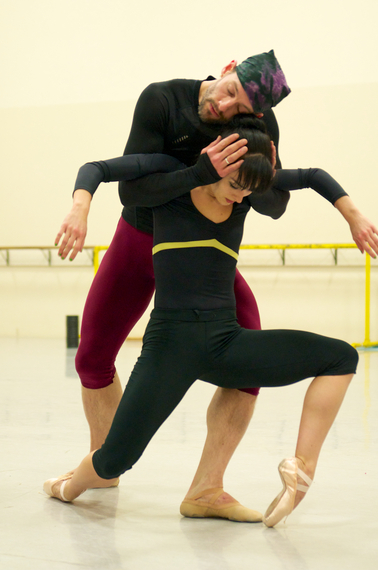LES MISERABLES *** 1/2 out of ****
BREATHING TIME * 1/2 out of ****
LES MISERABLES *** 1/2 out of ****
IMPERIAL THEATRE
I really do love
Les Miserables. I listened to the cast album(s) again and again long before I saw the show in person. I first saw it in Florida in some cavernous space -- my seat was up in the rafters and the stage was a mile away and this was the umpteenth touring production trudging through another matinee and I realized this was perhaps not the ideal introduction. But at least I finally saw it. Then I saw it on Broadway, probably about five or six years into its initial run with no one from the original cast within miles of the place. Then I saw the tepid revival, which opened about a week after the original run ended. And then the dreadful film version, chock full of actors who couldn't sing. (Even Hugh Jackman was wanting; he's an engaging stage presence but his voice is light and thin, not the booming presence called for.)
So now, 27 years after it opened in New York, I'm finally seeing
Les Miserables on stage with a generally excellent cast fresh and eager early in their run (even though some have been doing it for years). For anyone who has not seen it in a very long time or is considering to take the plunge, go. The new staging sans turntable makes it feel fresh, the performers are by and large up to the task and the cascade of catchy, stirring numbers is as remarkable as ever.
Is it perfect? No. But there's no pleasing some people. I have a friend who was lucky enough to see the original Broadway run just as it opened and that night is emblazoned in his memory. Like some opera queen who gets furious when a beloved production is mothballed by the Met, he was very unhappy about the slightest change. Why get rid of the turntable? It worked, he says! Why reduce the little boy Gavroche's big number? Why a slightly smaller orchestra? (Well, he has a point there.) Why are the Thenardiers such buffoonish hams, when the originals were so much better? Why would any role not be gorgeously sung since surely they could get anyone they wanted? And yet, even as the complaints piled up, his first thought was yet again, what a terrific work it is.
Praising
Les Miserables is supposed to be for the masses, not the critics, who sniffed at it when the show opened originally and have been sniffing ever since. Among the more ludicrous darts is the idea that the Victor Hugo novel is too epic and serious to turn into a musical. But heck, it's not like the show isn't epic and serious as well. (Indeed, if there's any complaint it's that this show is almost too murky; surely a little more lighting at times wouldn't go amiss.) They complain about its aspirations to opera, though the show isn't really trying to be an opera. But then they turn around and attack melodies that are re-used at various points throughout the show -- even though of course that's precisely what operas do and it's tremendously effective when done well.
If there's one thing
Les Miz doesn't lack, it's melodies. I've seen so many new Broadway musicals that must go begging for a good song or two, that it's astonishing to me how often the tunes of
Les Miz are dismissed, despite being catchy, character-driven and also working in a pop context outside of the show, something Broadway musicals used to do as a matter of course but rarely can any more. I can't help it -- that stirring four note melody starts repeating and I get emotional; the chorus leans into "Do You Hear The People Sing" and I'm moved, genuinely moved. Hey, I love Sondheim. I adore Philip Glass and high art and complex, challenging works as much as the next guy. But give me a catchy song to sing and I'm awfully happy too.
I'm assuming of course that you know the story and
Les Miz has proven so popular over the years that you probably do. Jean Valjean steals a loaf of bread in the late 1700s just to feed his sister's starving child. He is sentenced to prison and serves an extraordinarily long term of 19 backbreaking years. Released in 1815, he finds no release -- branded a criminal, he is treated like dirt and must break the law and flee his former self in order to survive. Soon Valjean is swept up in the events of the day: he becomes a mayor and important figure, fights for the innocent, befriends a dying employee of his and promises to care for her child and then raises it as his own (always with one eye out for the police). They end up in Paris in 1823 with that child a young woman who falls in love with an idealistic student taking part in a doomed uprising.
Stalked by a policeman named Javert, Valjean must protect this child, stay true to his growing religious beliefs and rescue her lover, all while dodging the law in the name of justice. This scratches the surface of the novel but the show gives a vivid sense of the grinding despair that most people faced in the France of that time. Rarely has a musical been so despondent in outlook and yet left people feeling so uplifted. Its primary reason for success is the remarkable stage craft of the original and those terrific songs, but surely another factor is the quiet faith threaded throughout that grows in importance until the almost beatific prayer of Valjean that is the highlight of act two (and this production in particular).
But like the far greater Ring cycle of Wagner and its Wotan (hey, I haven't completely lost my senses),
Les Miz rises and falls on its Jean Valjean. Here we have a corker in Ramin Karimloo, a vivid, magnificent presence who has been tearing it up in London in such dull fare as
Sunset Boulevard, The Phantom Of The Opera and its misbegotten sequel. He's finally been offered a shot at a really great role and makes the most of it. Colm Wilkinson had an almost unearthly tone when he originated the role and I'm sorry I never got to see him. But compared to the other Valjeans I have seen and the recordings of Wilkinson, Karimloo offers a more nuanced and human Valjean. Nuance is not a word one hears a lot about in connection with this show, but he's got it. His most sterling moment is "Bring Him Home," that act two prayer when Valjean asks God to spare the life of Marius (Andy Mientus), the student revolutionary in love with his adopted daughter. Unlike everyone else I've seen, Karimloo is genuinely quiet here; he really seems to be praying and pleading with God. When he says "Let him live" and gently pokes a finger to the heavens in entreaty, it's soul stirring, not the steely demand that others make of it. The show is often a whirl of scene changes but here all is quiet and still and perfect.
The other revelation was Will Swenson as Javert. I've never really liked this role or his two big numbers; dramatically they haven't quite done it for me. Javert is always so rigidly and dogmatically portrayed, he seems one step removed from a Nazi commandant. But here Swenson makes this man very human. He is of course misguided in his devotion to the rule of law, but Swenson's Javert never seems a monster. Thus, Swenson is all the more moving when he sings "Stars" and later is tortured to the point of suicide by Valjean's unquestionable goodness. This balance between the two leads, this alone makes the show worth seeing.
I've liked even less the tyke Gavroche, who taunts the enemy, ferrets out spies and is generally a Dickensian scamp. The child actors playing him always seemed to be too cutesy and desperate for attention. But Joshua Colley actually keeps his performance grounded and believable and anything but an outtake from
Oliver! It's almost impossible to predict who will make the transition from child to adult actor -- especially based on a relatively small part -- but I won't be half surprised to be praising Colley a decade from now.
You know what? I never really liked the romantic duet "A Heart Full Of Love" either! (Hey, for a show I love, I sure have a lot of complaints. Keep in mind, I might have issues with four or five songs, but that leaves a dozen or so I think are grand.) The tune was always too faux operetta for my taste, utterly devoid of actual passion in exchange for the bland prettiness that Nelson Eddy and Jeanette McDonald specialized in. Not here. Andy Mientus of
Smash and Samantha Hill find humor and heart in the number, turning a decorative bauble into a real meeting of minds and hearts.
Normally, Marius and Eponine burst into adoring bliss, even though they've literally just met. But when Marius sings "A heart full of love," he delivers it in a halting, bashful style: he's a student struggling to express the emotions washing over him and frustrated by how words fall so short. She reciprocates this awkward but sincere feeling and the mood is humorous and sweet and real. The entire song is staged cleverly and paced so that they're really communicating with each other and falling in love, not just singing past each other.
Mientus does not have the booming voice and presence of past Marius's. He is, in fact, notably not terribly tall. (I appreciated the Alan Ladd-lengths they go to get Mientus one or two steps up the stairs when he has to rouse his fellow revolutionaries.) But he's a handsome devil and his boyish demeanor and size actually serve the show very well. It emphasizes the callow youthfulness of the students and how ill-fated their games at revolution will be. And Mientus comes into his own on "Empty Chairs At Empty Tables," displaying a genuine gravitas and wounded shell-shock that makes his earlier naivete all the more poignant. He really does seem to have gone through hell.
On the downside, Nikki M. James (a worthy Tony winner for
The Book Of Mormon) simply doesn't deliver at all with "On My Own" and "A Little Fall Of Rain." Her acting is solid indeed (Marius seems like a bit of a fool for not noticing her, frankly) but vocally this style doesn't suit her at all or perhaps the comic numbers of
Mormon masked an insufficient instrument. Even worse is Caissie Levy as Fantine. Like James but even more so, she's of the Olympic Games style of singing where random notes are held for as long and loudly as possible with the lyrics becoming nonsense in the process. She's simply blaring out "I Dreamed A Dream" to no effect whatsoever, though the restraint of singing in the afterlife suits her modestly better at the finale. Cliff Saunders and Keala Settle like so many others over-do the comic relief of the Thenardiers. Don't they realize they'd be funnier if they were more real and more threatening? She delivers "life long shit" with such bald emphasis it leaches the fun out of it.
The directors Laurence Connor and James Powell have not sacrificed the cinematic scene-changes just because they've removed the turntable. Events whirl by and the stage is filled with people at a moment's notice with effortless ease. The lighting by Paule Constable surely could be a tad more varied, but it's appropriately gloomy. The costumes by Andreane Neofitou and Christine Rowland are strong (with the notable exception of the too-jokey Thenardier outfits for the final feast). The set and image design by Matt Kinley with projections by Fifty-Nine Productions feel vivid and effective, rather than cost-saving, from the "widescreen" effect when the action expands seemingly along with the set in Paris to the sewer scenes and Javert's death.
Not so the smaller orchestra (which is a shame). But the new orchestrations of Christopher Jahnke, Stephen Metcalfe and Stephen Brooker, with the able conducting and musical direction of James Lowe are up to the task of making the most of them. To be honest, I didn't note the lack during the performance. With numerous subtle touches, the two lead performances in great shape and that clutch of great songs, it's no wonder you'll be hearing the people sing
Les Miz for years to come, even if other critics prove deaf to its charms for reasons that escape me. It's a bold, ambitious, intelligent musical and at least in New York City, you haven't been able to see a better production for about 25 years.
BREATHING TIME * 1/2 out of ****
FAULT LINE THEATRE AT IATI THEATRE
In real life, tragedy can add a retrospective poignancy and fascination to the most mundane of days. But in drama, this is never the case. Simply saying that a group of soldiers are shipping out to a battle at Gallipoli or passengers are booking passage on the Titanic will not in itself suddenly impart heft to a short story or play or any work of art. In fact, the reverse is true: such a revelation feels like a cheap gimmick unless what has come before is already fascinating and complex.
So
Breathing Time begins as an all-too familiar office drama where two men are locking horns in a daily ritual between the pushy and aggressive Jack (Craig Wesley Divino) and the more sober (in every sense) Mike (Lee Dolson). Jack has a board meeting at 9 am in which he's going to pitch a new market for their financial firm to exploit. Mike is in early because he's always in early to beat the traffic. "Brown noser!" is the sort of juvenile dig Jack makes while trying to get under Mike's skin in a good-natured (?) way.
A description of his idea lures Mike in. (In short, Jack plans -- in part -- to offer "insurance" to advertisers who buy ad time on a TV show but then get screwed when the ratings underperform what they paid for. This makes no sense since TV channels already offer insurance to advertisers on their own: if a TV show scores ratings below an agreed-upon level, the advertiser is given "make-goods" in the form of free ads on the same show or another one with a similar audience makeup. Since playwright Beau Willimon is the creative force behind the US remake of
House Of Cards, he surely knows this -- even though it's on Netflix he's clearly savvy enough to understand this. But anyway....) Jack suggests Mike work out some of the technical details and if it's up to snuff, he'll give Mike credit.
This off-hand comment is about the only drama in the play. Perhaps Jack will take Mike's work and screw him out of a part in this career-making idea? Neil La Bute and David Mamet are the touchstones for this very well-trod material. But then a comment well into the piece suddenly clues us into the tragedy at hand...
...and we immediately shut down. Since the play feels like it's been spinning its wheels, we've been waiting for some indication of where it's going. When the tragedy looms large, we largely lose interest. Oh, is that it? We're supposed to care simply because of what's going to happen next? Obviously, major events serve as the backdrops for countless works (hey honey, let's move to Stalingrad! says a Russian man to his wife in 1938). But it's when the tragedy is revealed in cheap fashion that we are suspicious. And even if we knew from the start where the tale was headed, it wouldn't make Breathing Time any more interesting.
Director Gus Van Sant pulled off this particular trick with remarkable skill in the film
Elephant. It's set in a public school on the day of a Columbine-like shooting. We know this from the start so there's no O. Henry-like reveal. More to the point, each moment is informed with a remarkable attention to detail, to the sheer beauty of young people going about their days. It's the sentimental idea that life is precious, that every moment should be appreciated, but Van Sant elevates it with an artistry and sensitivity that makes this common place feeling seem fresh and painfully true.
In
Breathing Time, we have no such guiding spirit. The second half is even more dispiriting, with the wife of Mike and the sister of Jack meeting for the first time. Their conversation is even more hackneyed and cliched and without interest, through no fault of the actresses involved.
Despite the major faults of the script by Willimon (who garnered an Oscar nomination for turning one of his plays into the feature film
Ides Of March directed by George Clooney),
Breathing Time has been presented with care and skill. Director Aaron Rossini has us believing something of interest might in fact be about to happen for as long as possible. All the actors are strong, with perhaps Divino a stand-out as Jack. The set design by Tristan Jeffers is effective in the small space of IATI, aided well by the lighting of John Eckert and the sound design of Chad Raines.
Willimon surely did not set out to offer a
Twilight Zone-like twist. And if he did, he needed to let the twist serve some crucial purpose, help us see the tragedy itself or the lives before the tragedy in a fresh light. Instead, it's a dead weight that crushes whatever modest breath the actors can give to their characters.
THEATER OF 2014
Beautiful: The Carole King Musical ***
Rodney King ***
Hard Times ** 1/2
Rosencrantz And Guildenstern Are Dead **
I Could Say More *
The Loneliness Of The Long Distance Runner **
Machinal ***
Outside Mullingar ***
A Man's A Man * 1/2
The Tribute Artist ** 1/2
Transport **
Prince Igor at the Met **
The Bridges Of Madison County ** 1/2
Kung Fu (at Signature) **
Stage Kiss ***
Satchmo At The Waldorf ***
Antony and Cleopatra at the Public **
All The Way ** 1/2
The Open House (Will Eno at Signature) ** 1/2
Wozzeck (at Met w Deborah Voigt and Thomas Hampson and Simon O'Neill)
Hand To God ***
Tales From Red Vienna **
Appropriate (at Signature) *
Rocky * 1/2
Aladdin ***
Mothers And Sons **
Les Miserables *** 1/2
Breathing Time * 1/2
Thanks for reading. Michael Giltz is the founder and CEO of the forthcoming websiteBookFilter, a book lover's best friend. It's a website that lets you browse for books online the way you do in a physical bookstore, provides comprehensive info on new releases every week in every category and offers passionate personal recommendations every step of the way. It's like a fall book preview or holiday gift guide -- but every week in every category. He's also the cohost of Showbiz Sandbox, a weekly pop culture podcast that reveals the industry take on entertainment news of the day and features top journalists and opinion makers as guests. It's available for free on iTunes. Visit Michael Giltz at his website and his daily blog. Download his podcast of celebrity interviews and his radio show, also called Popsurfing and also available for free on iTunes.
Note: Michael Giltz is provided with free tickets to shows with the understanding that he will be writing a review. All productions are in New York City unless otherwise indicated.







